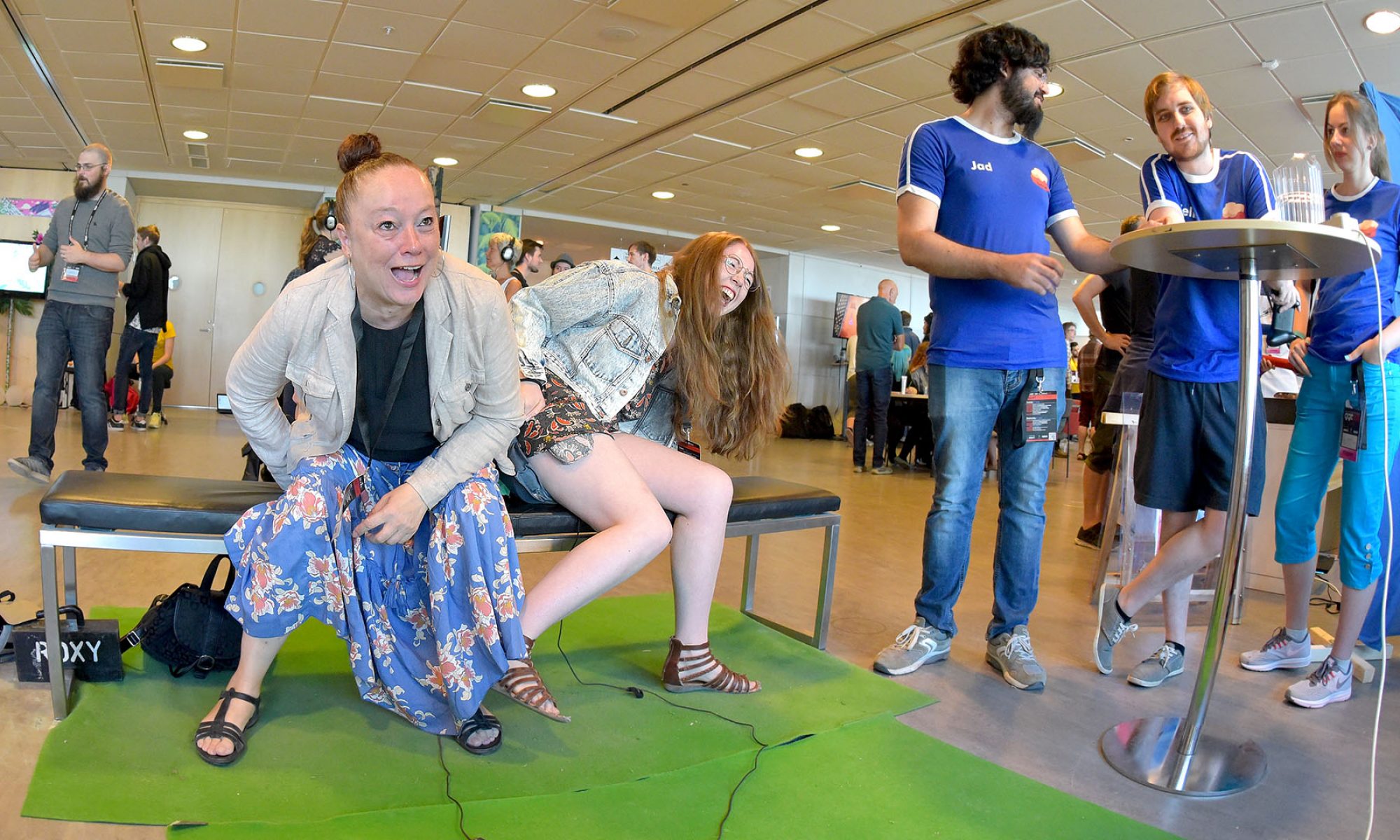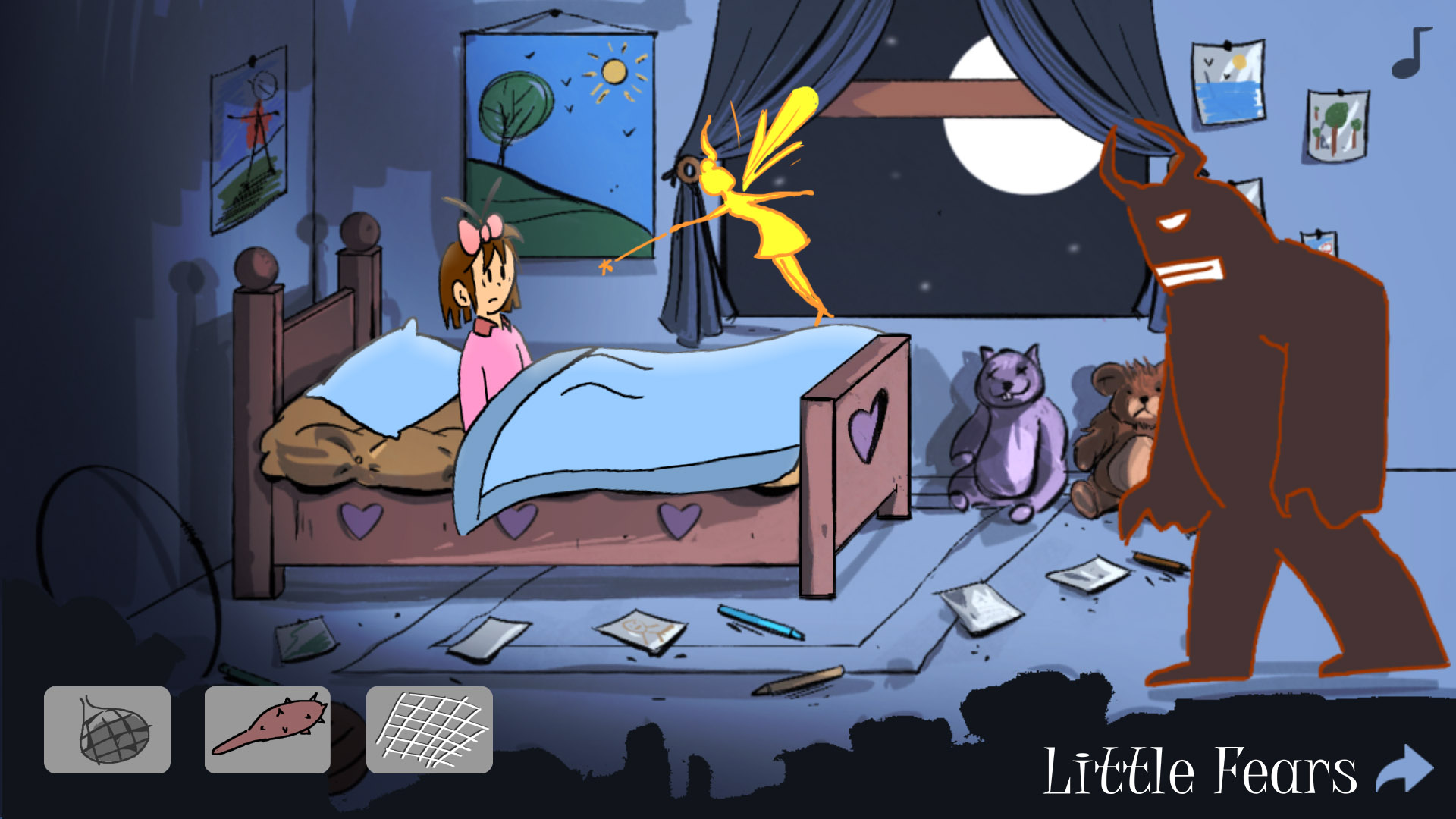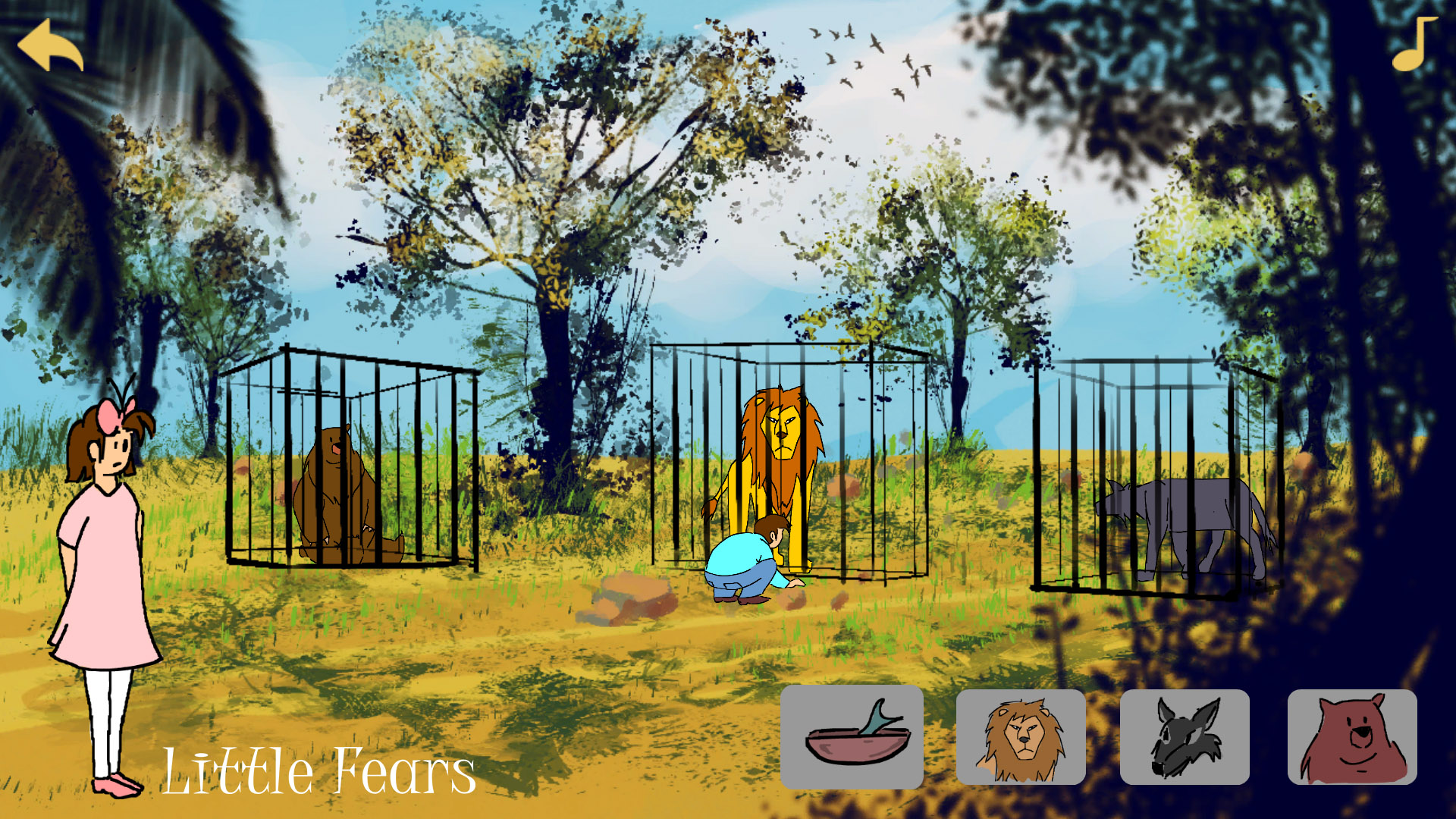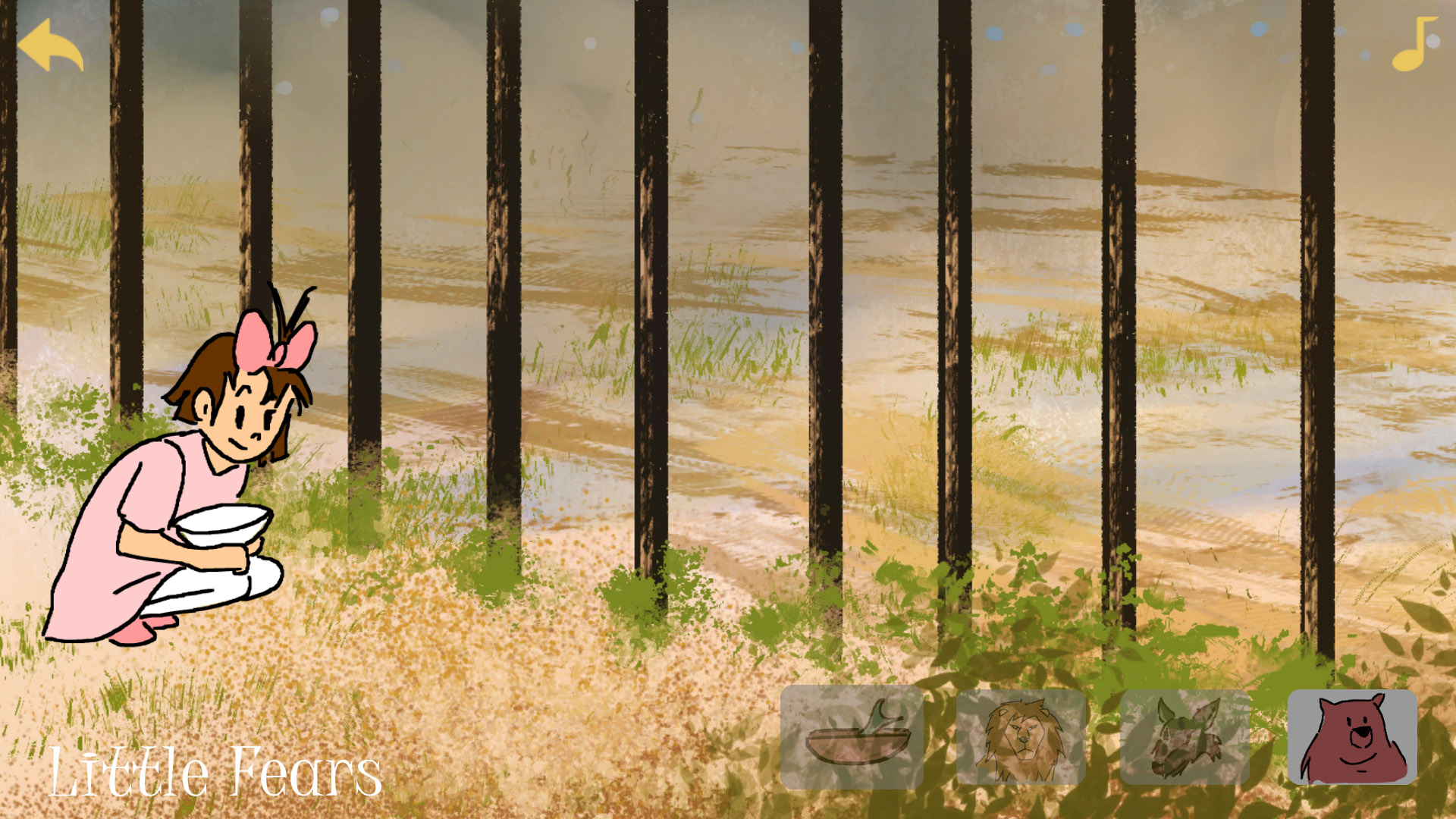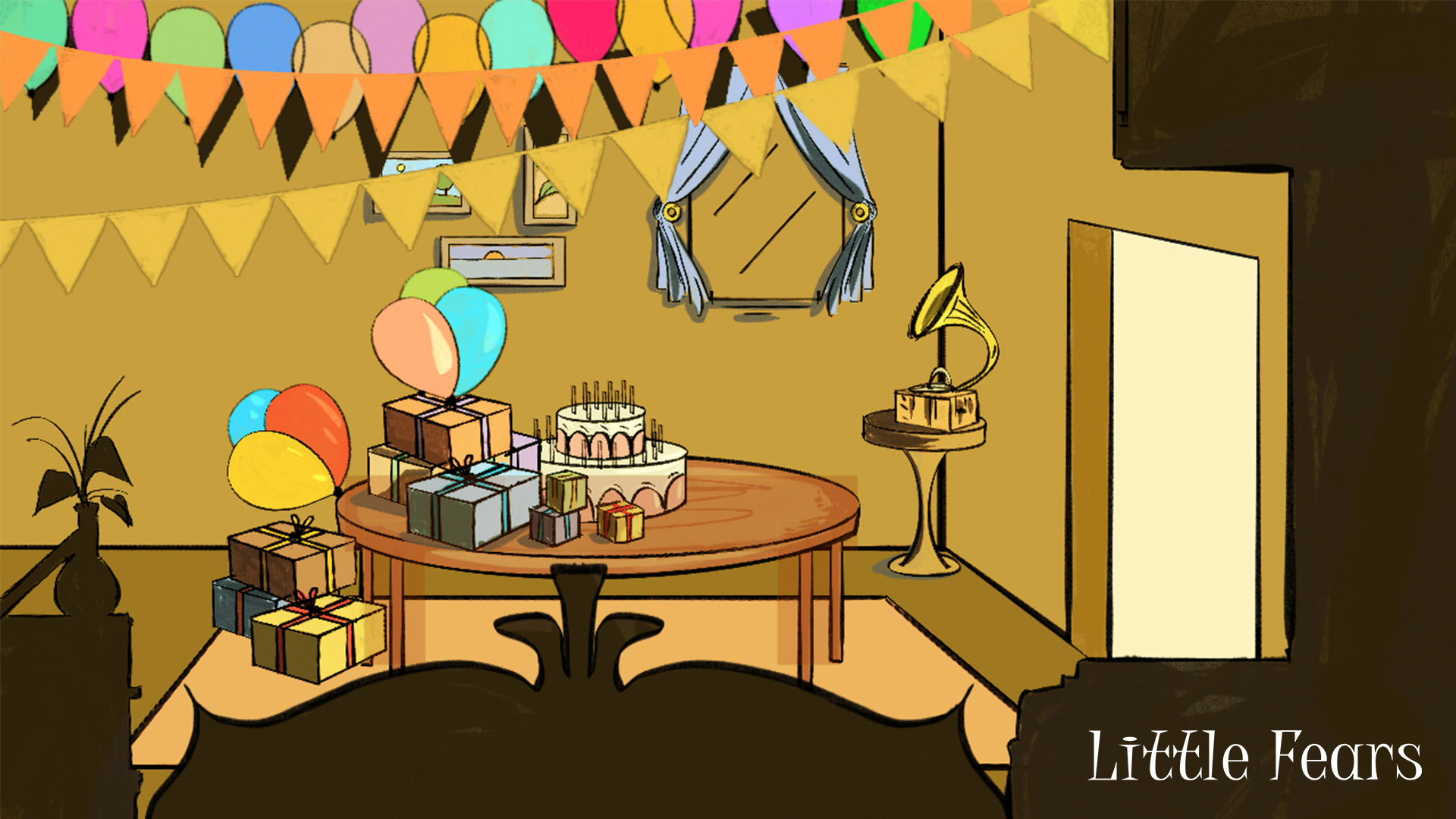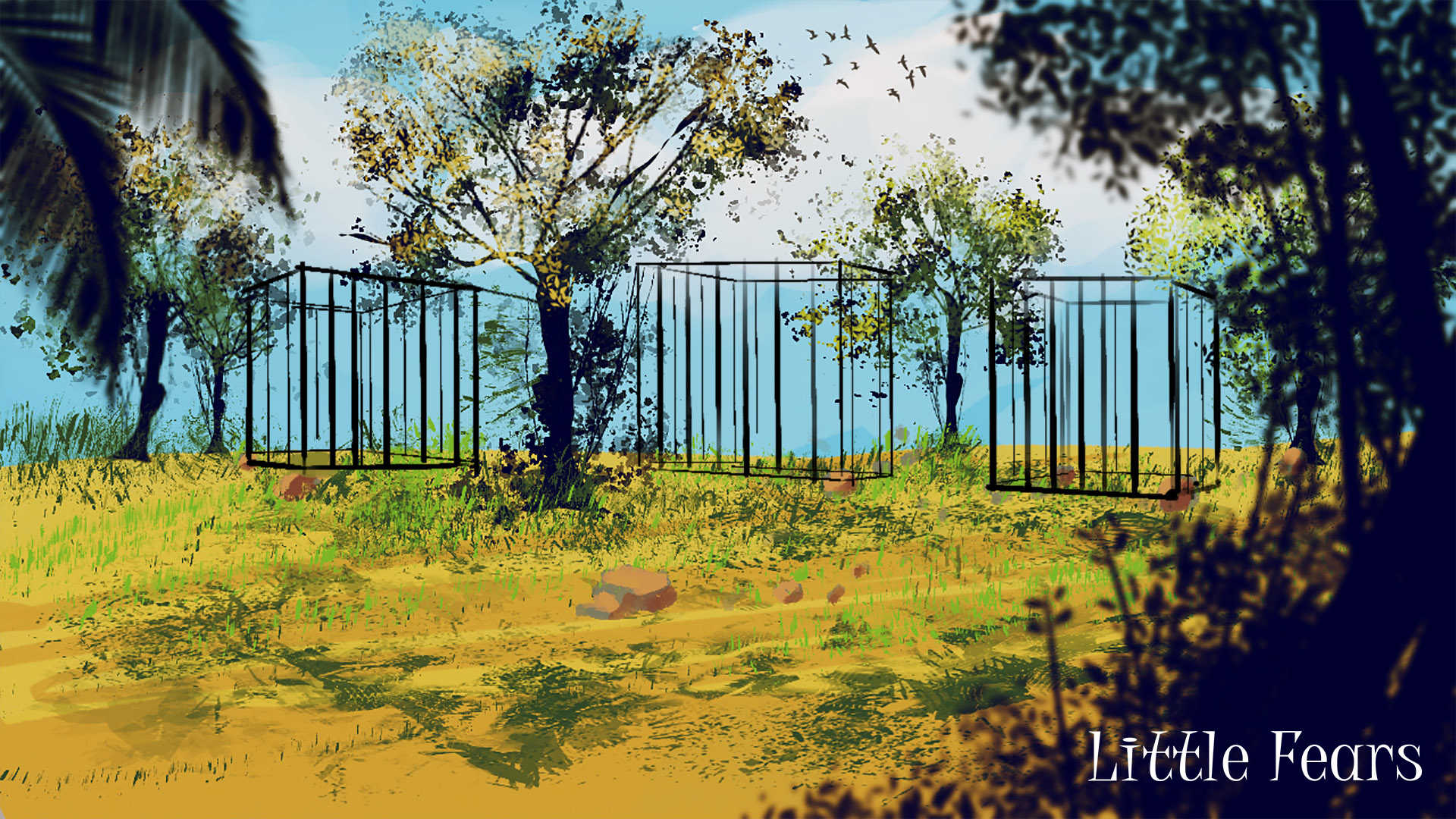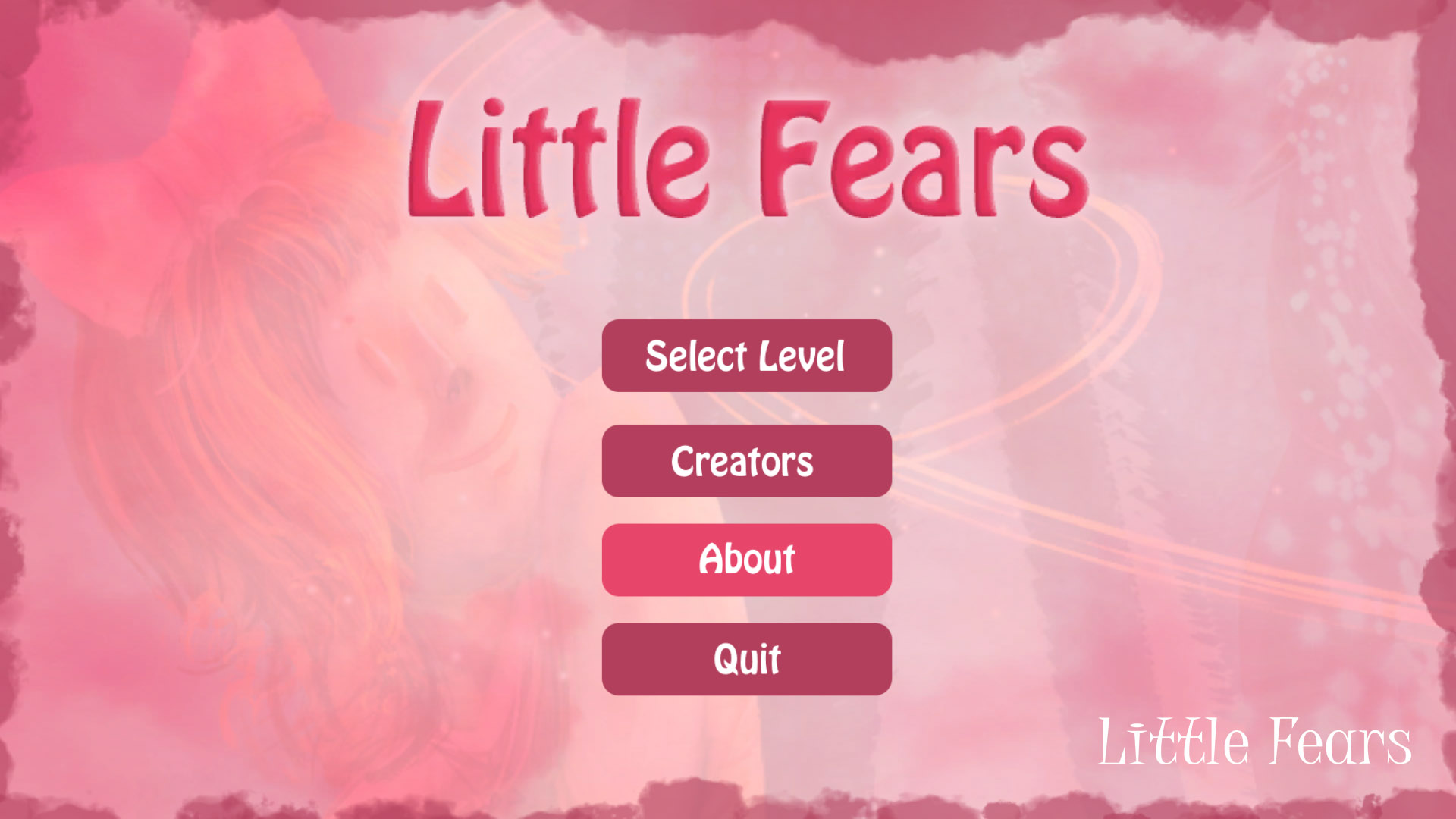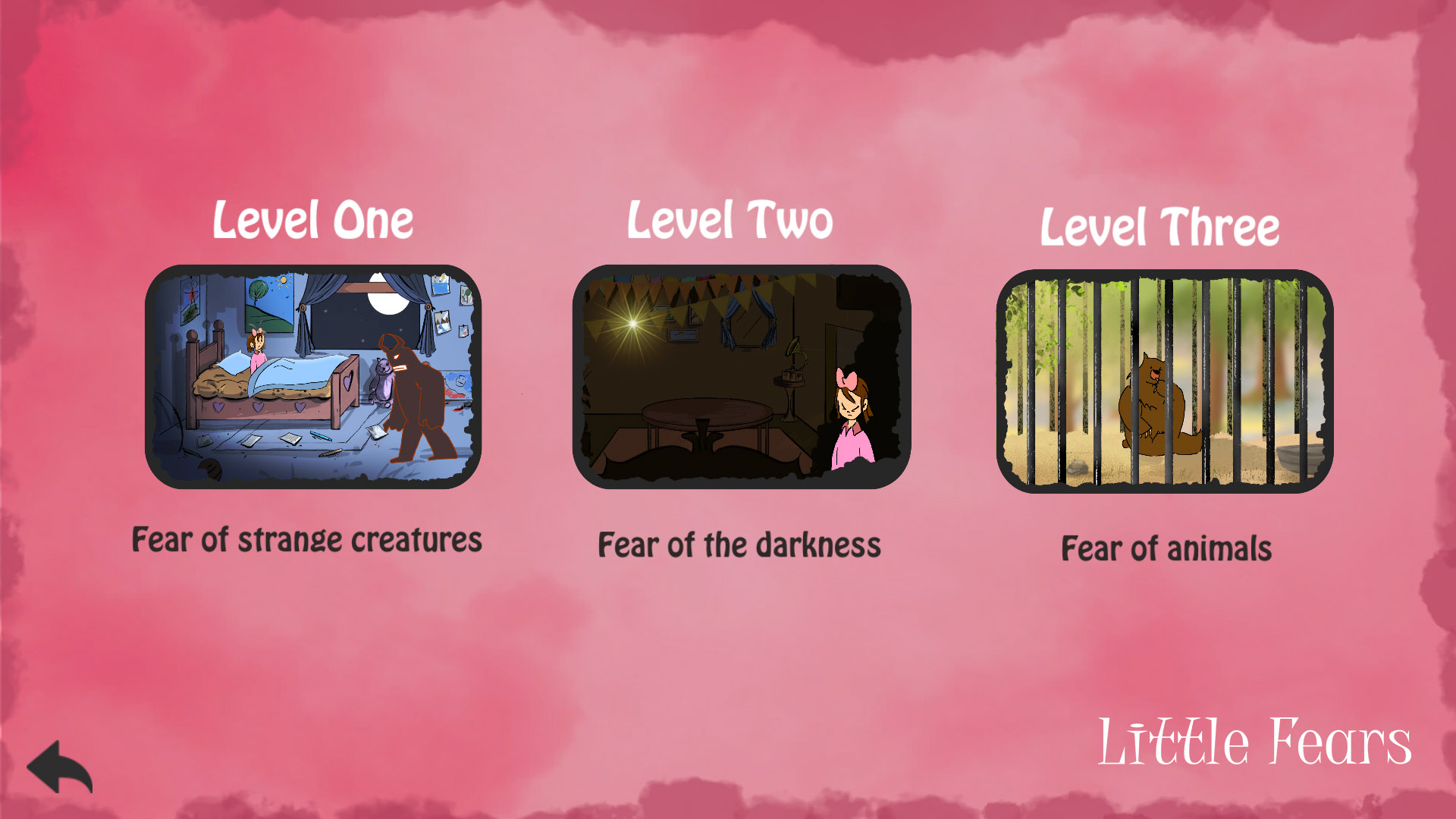Download and play Little Fears!
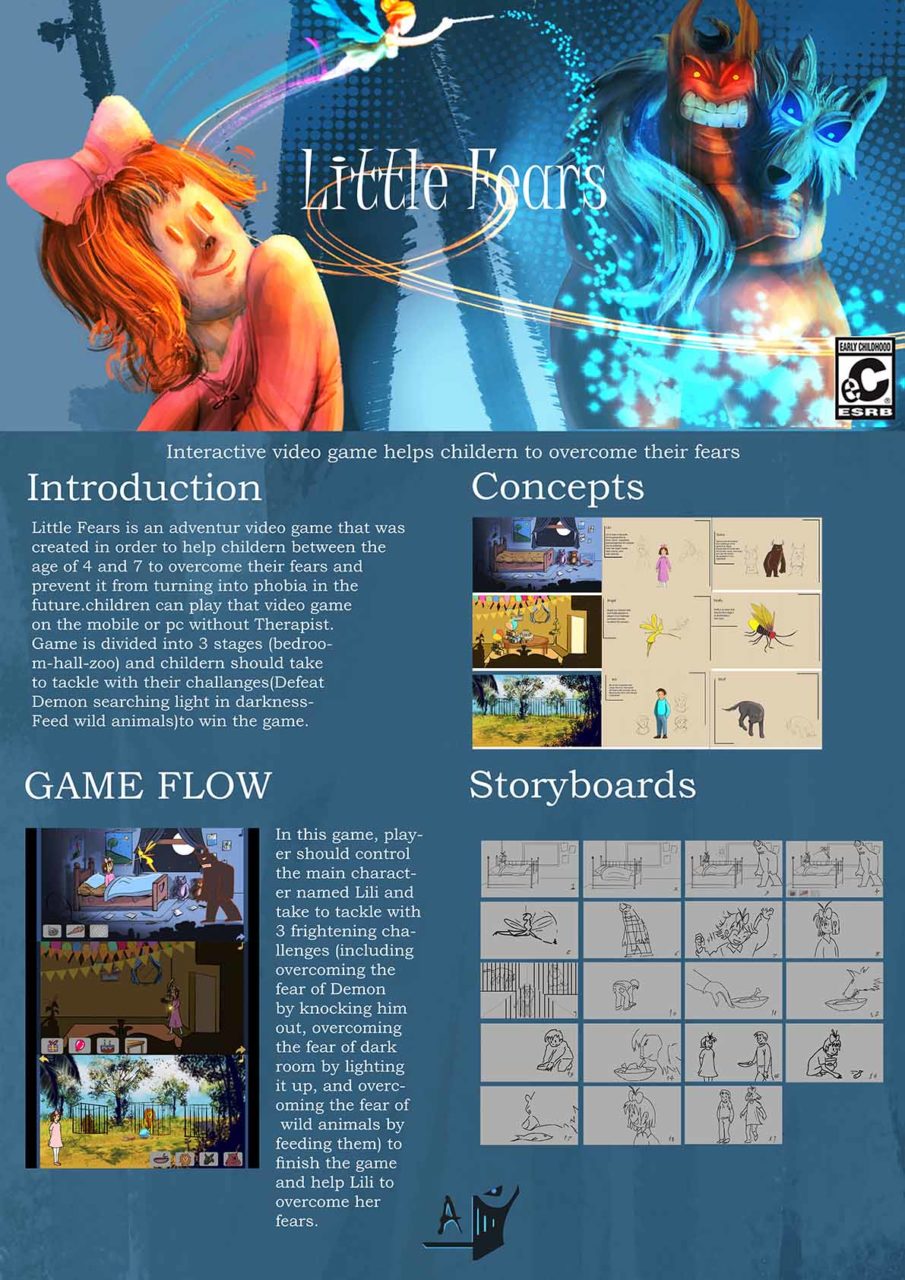
During preschool ages, children usually show some normal fears including fear of animals, imaginary creatures, dark, and loneliness. Although such fears and other similar subjects of fear are normal for these ages, they can develop into phobias in the next ages, especially if fear is intensive and frequent. It seems to be the case for a considerable number of people with phobia diagnosis. It has been discussed and agreed that children need different psychotherapeutic interventions compared with adults. In recent decades, several types of Psychotherapy, including play therapy, have been introduced as effective and appropriate interventions for children. Although these psychological interventions are effective among children, developing new and attractive interventions for new generations of children are important. Specifically, computer-based interventions are the most appropriate options for this aim because such interventions are more attractive and acceptable for today’s children. Since computer games are much popular among children, many therapeutic plans have been focused on using such games for achieving therapeutic effects. Nowadays, electronic methods including video games are known as effective and attractive instruments for the treatment of many mental health problems. In recent years, using video games for therapeutic purposes have become common and popular in both research and mental health services. Many video games have been designed specifically for therapeutic purposes called electronic games for psychotherapy (EGP) or serious games. However, some electronic games for entertainment (EGEJ), also called off-the-shelf games, may have benefits for mental health. The effectiveness of video games as a type of psychotherapy has been confirmed on various psychological problems in recent years. In this study, we examine the effects of a therapeutic video game which is designed based on important guidelines and recommendations of past research in this field. The most important consideration of this study is the developmental stage of our target population which includes preschool ages (4 to 6 years old). Considering the developmental stages of children is essential for designing a therapeutic video game. Past research has suggested that when long-term psychological change is targeted, preschool ages are very appropriate because of more neuroplasticity of the brain in this developmental period. However, it is recommended that such interventions should be conducted for children after 4 years of age because fine motor skills are usually required for therapeutic video games. Through this designed therapeutic video game, we will try to facilitate cognitive processing of fears and improving necessary coping skills to prevent vulnerability for specific phobias. We hypothesize that such intervention can be significantly effective among preschool children because it is adjusted to the cognitive development of preschool children. Additionally. It can be more effective for preschool children to learn some facts or skills through manipulating objective materials rather than direct verbal training. So, it might be more attractive and acceptable than verbal interventions for children.
The current study used Product Theory to highlight the potential of design in order to bring emotional value to products for the satisfaction of a person’s needs. In doing so, a video game was created aimed at preventing children’s fear of turning into phobia.
In the video game development procedure, First, the scenario and the game’s layout and its three stages were examined. After that, we started designing game puzzles on how players who include children can easily play the game until the end.
The game was made entirely in two parts: Art and Programming. In the art section, the background of the game was done by Adobe Procreate, and the final construction was done in Photoshop. We used Adobe Animate CC for the animations, and because we focused so much on the movements, we chose the Hand drawing method and designed the images one by one. After designing the characters and animating them, it was time to color and match them with the backgrounds so that the characters would stick together, or in other words, combined and composed.
Then the output of the animations was prepared. The good thing about the animation program is that by making a movie clip, you can easily crop the sprite animations and send them to the game engines without any additions. So it was decided to do the final assembly on the game engine.
Now it’s time to program. Our engine of choice was Unity, and our main reason for doing so was its clean output for phones. First, we selected two-dimensional Unity and entered the sprites from the animation program. The program itself was used where special effects such as flashlights and flare lenses and particle lenses were needed. Unity programming was done by C #.
The game was assembled in Unity, and there were songs and sound effects added to the game. Two outputs for Windows and Android were our final work
Team:
- Amirhossein Ghaedi-Game Designer and character designer
- Mehrdad Rezai-Game designer and animator
- Mohammad hamzeie-environment designer
- Aliasgar HeidarI-Programmer
- Atoosa Hosseinkhah-Programmer
- Mahdi Karimi-Programmer
- Fariba Yazdekhasti-Psychological Advisor
